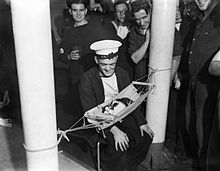This day, 11th November, we set aside to remember all the fallen in war; the hero’s who gave their today, for our tomorrow. These brave people and animals gave their lives, fighting to preserve all that they, and we, hold dear. Their selfless acts and sacrifices allow us the freedom we have; for that, and so much more, we remember them.
Horses are the animals primarily thought of when war animals are mention (at least in my experience in conversations); a war horse had many uses. Depending on the military role of the division in which a horse was placed, would often determine the use(s) of the animal.
A war horse would carry soldiers into battle, be used as transport for messengers, would pull equipment, machinery, artillery, supply carts, and much more. However, horses were integral to the war, and soldiers would form bonds with their horse, often sleeping close together for warmth when necessary. Donkey’s and Mule’s would also have been used for similar roles; however less so as transport for riders.
Perhaps a lesser-known animal used for pulling equipment and supplies, not used on the battlefield, but back home. Due to the usual animals used (horses, mules, donkeys, etc) as they had been taken into war, their roles at home were taken over by some less-common animals in their absence. Elephants and camels were used for transporting materials and such, as well as for ploughing fields, hauling hay/straw, and other every-day jobs that needed to be done. One of the more famous, was Lizzie the Indian elephant (pictured below); once part of a travelling circus, had her role in life completely altered by WW1 just as many people had – and she was put to work in a scrap metal yard in Sheffield.
Pigeons and dogs were also used to carry messages during war. Pigeons were useful with their homing instincts, being able to bring them back to where the message came from – thus being able to return a response message to the correct place as necessary. Dogs were able to navigate trenches and battlefields with more ease and speed than a human soldier, which made them great at transporting messages this way. Dogs had other uses in war, such as; being guard and/or watch dogs, using their keen sense of smell to find injured soldiers on the battlefield and carry medical supplies, as ratters, and (my no means least) as companions.
Cats would also have been used for companionship, as well as for rodent control in the trenches and living areas of the soldiers, as well as on Naval ships. As rodents spread disease and deplete food supplies, cats were of great value in war-time.
Although you probably wouldn’t have thought it, slugs were also of great value during war. How? Well, slugs have the ability to detect gas before humans. They close up their breathing pores and compress their body to protect themselves, and survive the gas. As such, soldiers would take a “Slug Brigade” with them, and when they saw the slugs react to gas, they put on their gas masks before the gas reached harmful levels, and many lives were saved.
Thanks to brave men and women on the battlefields, and back home; thanks to the many animals playing their part on the battlefields, and back home; thanks to the sacrifices made by so many, we have the lives we live today.
Please check out my November 2014 post Remembrance to see other animals that have been used in wars throughout history.

Cavelry 
War dogs and soldiers 
Donkey 
Captain and cat 
Stubby the military mascot dog 
Slug 
Soldier and military dog in gas masks 
Mounted soldier 
Military medical dog and soldier 
Mounted soldiers 
Naval crew and cat 
Soldier and war horses in gas masks 
Gas mask 
Crew and cat 
War horses transporting supplies 
Lizzie the Indian elephant
All other images are open source, Google images, or my own – or photos donated for use by the pet owners.
If you have any questions or comments; please post a comment below, or contact Ali’s Answers via one of my social media pages…
. Facebook (Ali’s Animal Answers)
. Twitter (@AlisAnswers)
. LinkedIn (Ali Lloyd)







